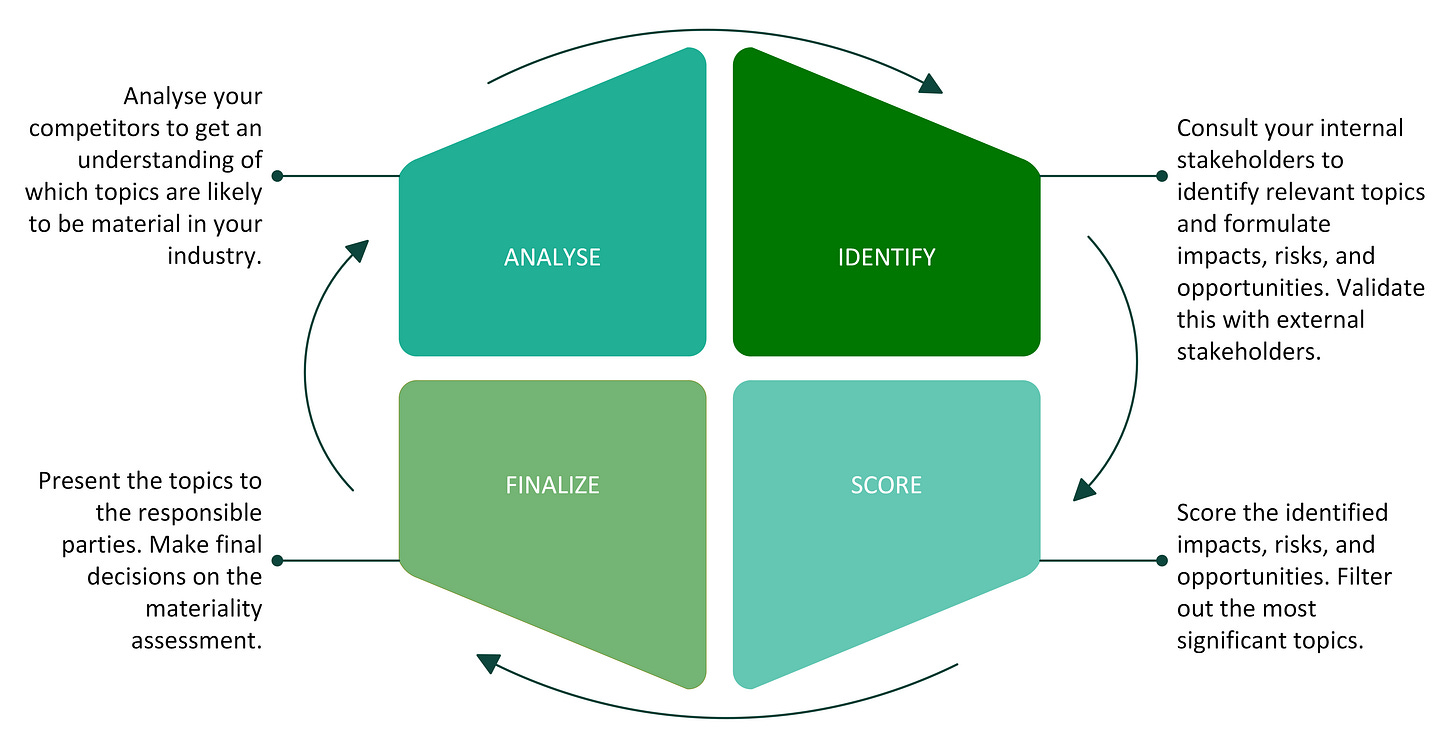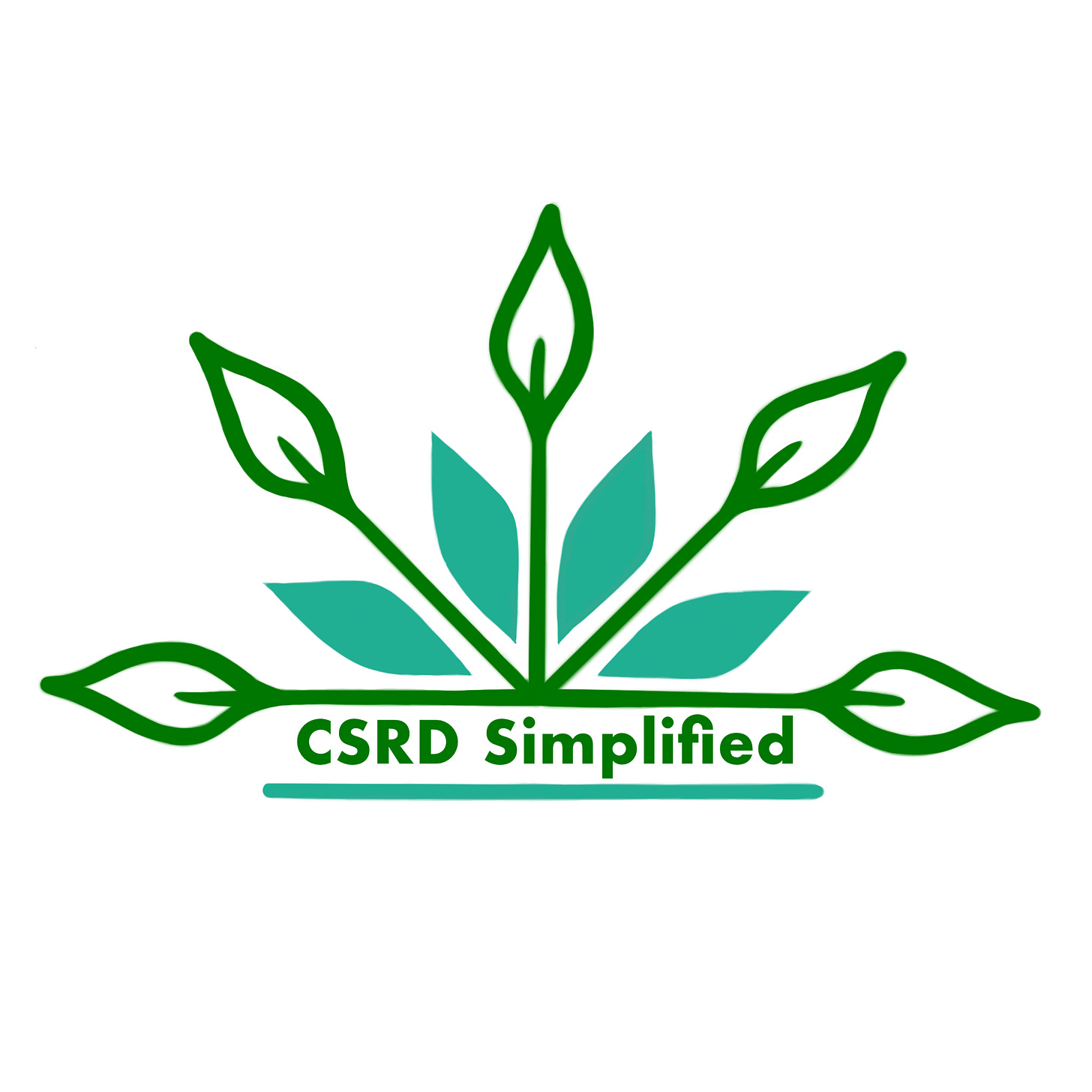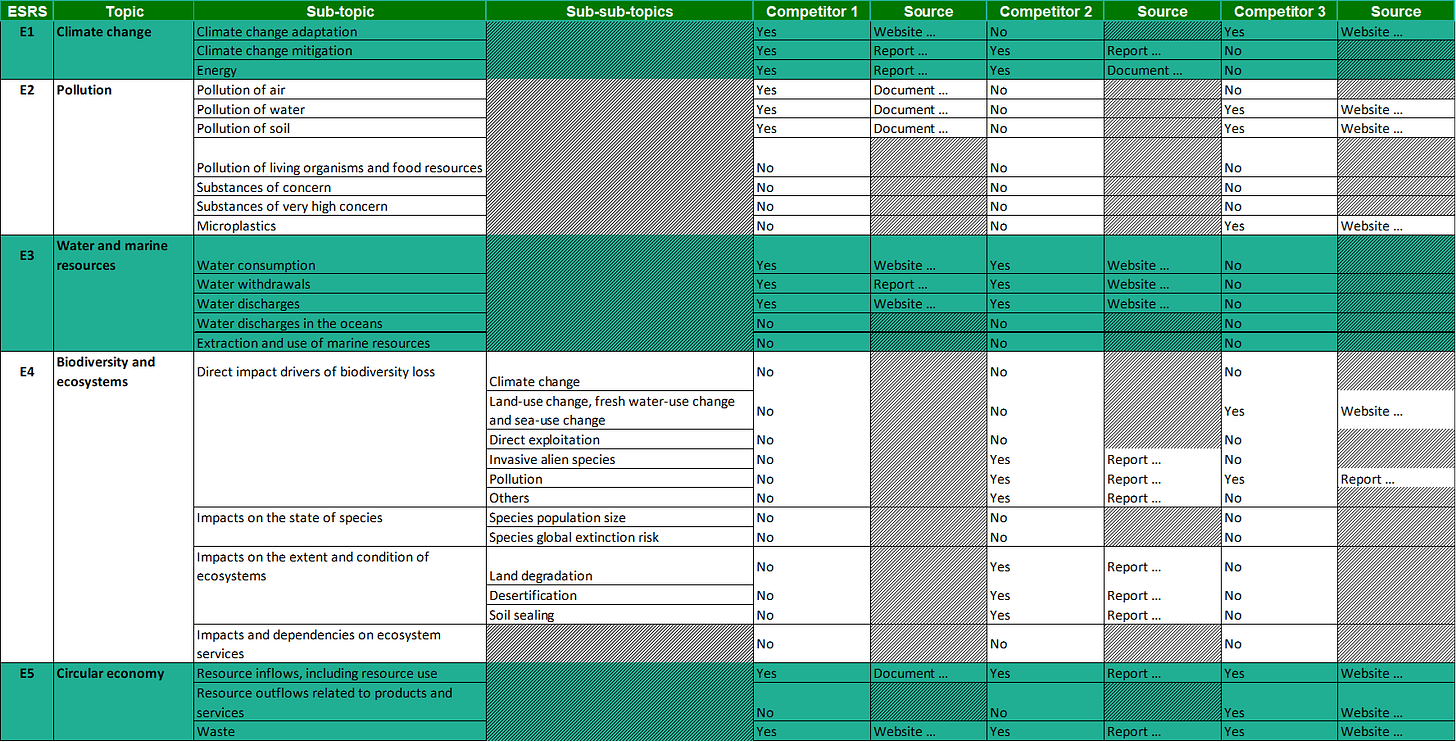1. Introduction
Companies must disclose environmental, social, and governance (ESG) impacts. However, not every ESG topic is relevant for each company. To identify relevant ESG topics a company can perform a materiality assessment. Materiality assessment is the process through which a company determines which sustainability topics are most significant to its operations and stakeholders. These significant topics, are the ones that the company needs to report on. This article aims to explain how a company can perform a materiality assessment .
The materiality assessment process is subdivided into four phases, which will be discussed:
2. Analyse
Before diving into analyzing potential material topics, it’s essential to understand what topics are likely to be important in your industry. You can get a sense of this by visiting these websites:
When conducting a materiality assessment, you must consider a list of topics found in Appendix A of ESRS 1. These include various environmental, social, and governance topics. The environmental topics are shown here:
The goal of the first phase is to get an initial understanding of potentially material topics by analyzing your competitors. Here’s how you can do that:
Identify competitors: Start by listing 10-20 major competitors in your industry. Include both direct competitors and those in similar markets. This list will help you focus your analysis.
Review competitor information: Look at your competitors’ sustainability reports, websites, and public disclosures. Identify the sustainability topics they focus on. Note that not all competitors may have public information available, so your list with competitors might narrow down based on available data.
Analyze and document: Go through the available documentation for each competitor. Identify the topics they mention. If they mention a topic you can assume that it is important for them. Record these topics and their sources:
By the end of this phase, you’ll have a preliminary list of potentially material topics based on your industry and competitors.
Example retail company
Imagine you are in the retail industry. You find that competitors like Walmart and Target frequently focus on topics such as energy use, waste reduction, and air pollution. These recurring themes indicate their importance in your industry.
Keep reading with a 7-day free trial
Subscribe to Sustainability Simplified (publisher of CSRD Simplified) to keep reading this post and get 7 days of free access to the full post archives.






